This website uses cookies so that we can provide you with the best user experience possible. Cookie information is stored in your browser and performs functions such as recognising you when you return to our website and helping our team to understand which sections of the website you find most interesting and useful.
Best Countries for Contract Electronics Manufacturing, Part 2: Malaysia, Thailand, Vietnam, and India
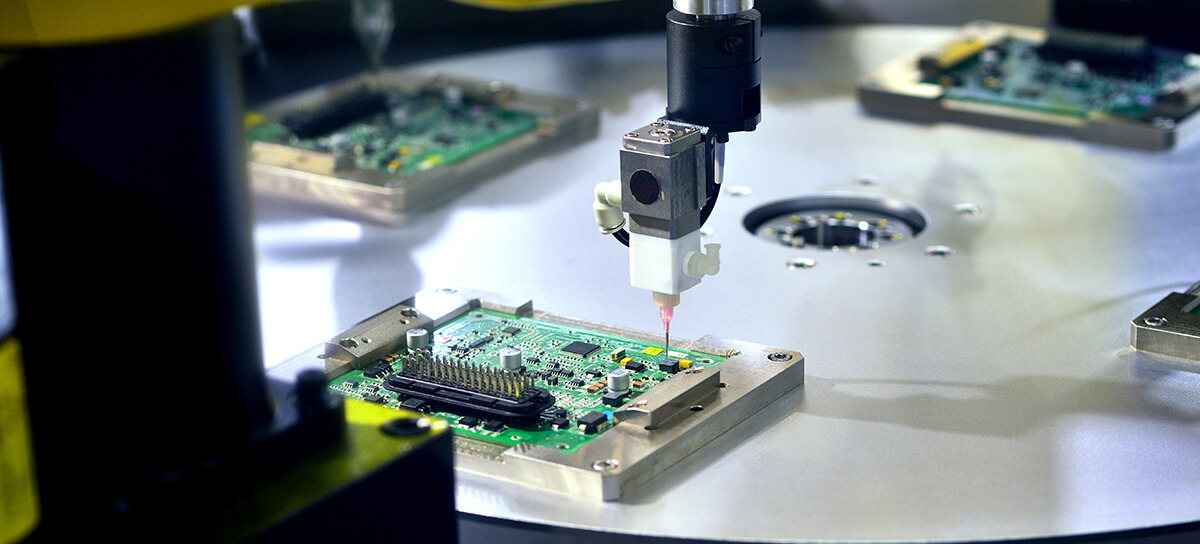

Andrey Solovev
Chief Technology Officer, PhD in Physics and Mathematics

Timur Yuldashev
IT Writer, PhD in Philological Sciences
In one of the previous articles, we mentioned some of the top regions and countries for outsourcing electronics manufacturing. In this post, we decided to write about some of these countries in detail. We’ll cover the pros and cons of these locations, local export regulations, and some of the top local EMS providers.
Our team specializes in developing embedded electronics and software. After you contact Integra Sources, we study your project, develop the product, test it, and hand over the design documents to you. Your next move is to organize mass manufacturing. Companies that don’t own manufacturing facilities outsource this task to EMS providers, including those located abroad. In the first part of this post, we talked about China, Taiwan, the U.S., and Mexico as potential locations for electronics production. Now, we would like to discuss Thailand, Vietnam, Malaysia, and India.
Malaysia

Benefits
- Advanced E&E industry
The country is one of the key global players in the electrical and electronic industry, which makes it one of the best countries for electronics manufacturing. In September 2023, E&E products accounted for 43.7% of its total exports. Malaysian manufacturers produce passive components, PCBs, consumer electronics, and industrial equipment. Additionally, corporations such as Intel and AMD started operating in Malaysia in the 1970-80s, so there’s no lack of highly skilled professionals specializing in electronics.
- Low labor costs
Factory and manufacturing average salaries in Malaysia are lower than in Thailand.
- Business-friendly environment and no export taxes
The country ranks 12th in the World Bank’s 2020 Doing Business Report. The government has introduced many initiatives to boost Malaysia’s electronics production industry. On top of that, almost all goods have zero export duties except for the country’s main commodities: petroleum, crude oil, and palm oil. You can see the rates in the Customs Duties Order 2022.
Challenges
- Limited capacity
Like other small countries, Malaysia has a limited labor pool, which makes it challenging to launch large-scale production there.
- Import dependence
Malaysia’s electronics production is highly dependent on imports of machinery and raw materials from other countries, which may become a problem if the political situation in the region escalates.
Some of the Top EMS Providers in Vietnam:
- Asia Printed Circuit Sdn. Bhd.
- LKL Sunrise Electronics(M) Sdn Bhd.
- RONNIE ELECTRONICS
- BCM Electronics Corporation Sdn. Bhd.
- VISION
- Supreme PCB Solutions. Sdn. Bhd.
- AR Dynamic Technology Sdn. Bhd.
- Inovus Technology
- Silvtronics
- Qdos Tech
Export Regulation in Malaysia
Malaysia’s main laws governing export operations are:
- The Strategic Trade Act 2010 and the Strategic Trade (Amendment) Act 2017
- The Customs Act 1967 (CA) and the Customs (Prohibition of Exports) Order 2017 (CPEO)
The Customs (Prohibition of Exports) Order 2017 divides goods into three categories:
1. Goods prohibited for export (First Schedule).
2. Goods that require an export license (Second Schedule).
3. Goods subject to export prohibition, except in the manner provided in the Schedule and when export is allowed under the International Trade in Endangered Species Act 2008 (Third Schedule).
These goods include turtle eggs, certain chemicals, minerals, ores, military equipment, wild animals, plants, certain foods, etc.
Additionally, the Restricted and Prohibited End-Users Order controls the export of goods to certain countries, entities, and individuals. The prohibited end-users include various individuals and enterprises in North Korea and Iran. The restricted end-users include North Korea, Iran, Congo, Ivory Coast, Lebanon, Sudan, Libya, Afghanistan, Iraq, Liberia, Rwanda, Somalia, and Eritrea.
Thailand
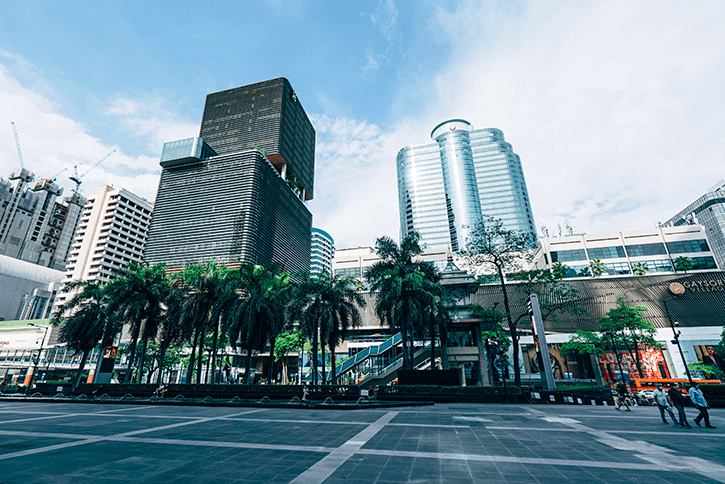
Benefits
- Electronics manufacturing hub
Thailand has become an important player in the regional electronics industry. The nation exports semiconductors, consumer devices, and automotive electronics. LG, Samsung, Intel, and other global electronics companies have established manufacturing there.
- Strategic location
Due to its proximity to key electronics markets in China, South Korea, India, Taiwan, and Japan, the country has become an attractive hub for electronics production. Being in the heart of the region makes it possible to distribute locally produced goods to both regional and global markets.
- Skilled workforce
Thailand’s electronics production enterprises have access to well-trained workers, particularly in electronics, due to a sound education system.
- Competitive costs
The factory and manufacturing average salaries in Thailand are lower than in China: $1,878 against $2,840. This and other factors make manufacturing here cheaper than in many other locations. As for quality, many Thai manufacturers have ISO, UL, and other certifications, so their goods meet international standards.
- Ease of doing business
According to the 2020 Doing Business report, Thailand ranks 21st in terms of business-friendliness globally, ahead of China, Japan, India, and Vietnam. This is largely due to the governmental support of the electronics industry, whose incentives encourage investments and growth in the sector.
Challenges
- Limited capacity
Just like Taiwan, Thailand cannot compare to China in terms of production capacity. Therefore, it would most likely be difficult to set up large-scale manufacturing there.
- Import dependency
Like many other locations, Thailand’s electronics production is highly dependent on the import of components.
- Climate instability
From time to time, the country suffers from Monsoon flooding that hits all local industries. Back in 2011, one of such floods paralyzed the local manufacturers of car parts and PC hard drives.

Some of the Top EMS Providers in Thailand:
- Circuit Industries Co., Ltd.
- Apex Circuit
- Bluechips Microhouse Co., Ltd.
- Draco PCB Public Company Limited
- Fabrinet
- KCE Group
- Amallion Enterprise
- Asteelflash
- Autech Thailand
- Kinpo Electronics
Export Regulations in Thailand
The country’s main governing legislation for international trade is the Export and Import Act B.E. 2522 (1979). The Ministry of Commerce can specify goods to be prohibited or restricted for export and import.
Currently, there are about 50 goods that are not allowed to be exported from Thailand, but this list often changes. Goods prohibited for export include natural sand and intellectual property-infringing goods, pornographic materials, narcotics, counterfeit goods, and others.
As for high-tech items, the authorities restrict the manufacturing and export of medical instruments and radio communication equipment.
Note that the Medical Instrument Act B.E. 2551 (2008) gives a very broad definition of “medical instruments” that includes, among other things, machinery, software, accessories, and components intended for medical use. The manufacturer of such goods must obtain a license to export them and comply with the Notification of the Medical Instrument Commission Re: Rules, Procedures, and Conditions for Manufacturing Medical Instrument for Export B.E. 2552 (2009) and the Notification of the Ministry of Public Health dated June 17, 2552 (2009) Re: Rules, Procedures, and Conditions for Making a Record and Report of Manufacture, Import, and Sale of Medical Instruments.
The export and import of radio communications equipment are controlled under the Radio Communications Act B.E. 2498 (1955) and the Notification of the National Broadcasting and Telecommunications Commission Re: Export of Radio Communications Equipment dated March 15, 2011. Exporters of such equipment or their parts must obtain a license and comply with the Radio Communications Act.
Vietnam

Benefits
- Low labor costs
The cost of labor in Vietnam is almost six times lower than in China, making it a very competitive location for manufacturing labor-intensive goods.
- Convenient geographic location
Vietnam’s electronics manufacturing industry benefits from its proximity to China, the key exporter of the necessary components. Also, its long Pacific coastline is well suited for fast international shipping.
Challenges
- Lack of qualified workforce
Although the country is definitely considered one of the alternatives to China, Vietnam’s electronics manufacturing is still emerging. One particular problem is the shortage of skilled specialists, especially in such complex industries as electronics. The government is investing heavily in education, but the issue will not be resolved quickly. As of now, most electronics manufacturers in Vietnam provide low-value-added assembly and testing.
- Poor supply chain infrastructure
Although Vietnam is also investing in infrastructure, it remains mostly underdeveloped when compared to China. In the Connecting to Compete 2023 Report, the country ranked 43rd, behind India, Thailand, Turkey, and other economies.
- Import dependency
Vietnam heavily relies on component suppliers from China, South Korea, and Japan.
- Low manufacturing capacity
Finding manufacturers in Vietnam capable of producing electronics in large quantities or scaling your current production is not an easy task. Overall, Vietnam is more suited for low-scale manufacturing of simple devices or even low-value-added assembly rather than producing advanced electronics.
Some of the Top EMS Providers in Vietnam:
- Jing Gong Electronics Vietnam Co., Ltd.
- THANH LONG
- Vector Fabrication (Viet Nam) Co., Ltd.
- Fab 9
- Sunching Electronics Vietnam
- SAOKIM
- Trungnam EMS
- VEXOS
- Sao Kim Electronics
- TRUNG NAM EMS
Export Regulations in Vietnam
As per Appendix III of Decree 69/2018/ND-CP, certain goods require trading companies to obtain export permits from the government. They include certain chemicals, minerals, industrial explosives, explosive pre-substances, certain animals and plants, aquatic species, medicines, medical equipment, raw gold, goods subject to export control in accordance with international treaties to which Vietnam is a contracting party, and more.
Note that according to Circular 34/2013/TT-BCT, foreign-invested enterprises may not export most of these goods from Vietnam.
Appendix I of Decree 69/2018/ND-CP prohibits the export of the following goods:
- Weapons, ammunition, explosives, military technical equipment.
- Encrypted products used for protecting state secrets.
- White and black rhinoceros, African elephants, and certain other animals, aquatic species, and livestock.
- Certain chemicals.
India

As the cost of labor in China is growing, companies are seeking new destinations for electronics manufacturing. Many businesses see India as the next manufacturing powerhouse, with the potential to rival China in the future.
Benefits
- Huge population
India’s population accounts for 1.4 billion people, which means two things. First, India has a huge labor force to offer (over 523,000). Second, just like China, India can serve as both a location for contract manufacturing and a target market, which is an important factor to consider.
- Cheap labor
India has one of the lowest labor cost indicators in the world ($269 in the manufacturing industry, according to salaryexplorer.com), so it’s not surprising India’s electronics production is on the rise.
- Government policy
While previously the government discouraged foreign direct investment, now the country is open for investments under its “Make in India” campaign. Companies, including Apple, have already moved some of their production to India.
Challenges
Although India has great potential, the country still has many issues that should be taken into account.
- Low productivity and quality
India’s GDP per hour worked is almost twice as low ($8) than China’s indicator ($15). The country lacks a highly skilled workforce, which affects the quality of local goods. India’s electronics production lags in production planning, supply chain management, quality, and maintenance. Additionally, the country’s manufacturing sector lacks organization and regulation.
- Poor infrastructure
According to the World Bank’s Connecting to Compete 2023 Report, India occupies the 38th position with an LPI score of 3.4. For comparison, China ranked 19th with an LPI score of 3.7.
- Import dependency
India is heavily dependent on the import of electronic components from China and South Korea. However, the government intends to fix it by investing in the semiconductor and display ecosystems.
Some of the Top EMS Providers in India:
- Anand Electronics & Industries Ltd.
- AS&R Circuits India Pvt. Ltd.
- Circuit Systems India Ltd.
- CIPSA-TEC India Pvt. Ltd.
- Shogini Technoarts Pvt. Ltd.
- Ascent Circuits Pvt. Ltd.
- Fine-Line Circuits Ltd.
- Genus Electrotech Ltd.
- AT&S India Pvt. Ltd.
- Epitome Components Ltd.
Export Regulations in India
Schedule 2 of the Indian Trade Classification (Harmonized System) of Export and Import Items (or simply Schedule 2 of ITC (HS)) imposes a number of export restrictions. The list includes Special Chemicals, Organisms, Materials, Equipments & Technologies (SCOMET) that require an export license and compliance with certain conditions. For SCOMET items, such conditions also include compliance with Weapons of Mass Destruction and their Delivery System (Prohibition of Unlawful Activities) Act 2005. Among other things, this document lists electronics, computers, telecommunications, information security, sensors, and lasers.

The Foreign Trade Policy 2015-2020 also restricts the export of certain goods to Iraq, Daesh, North Korea, Iran, and Somalia.
Conclusion
China and Taiwan are among the best countries for electronics manufacturing. But as the political tension in the region keeps growing, businesses are looking for alternatives.
Malaysia has been a strong player for many years. Thailand is a large electronics exporter too. Vietnam can’t offer the same level of quality but may be a good choice for the labor-intensive production of relatively simple products. India, despite being an emerging electronics exporter, has huge potential due to its population and government initiatives. Analysts expect the country to replace China as the next manufacturing powerhouse.
If your project is yet to be developed, contact Integra Sources. We specialize in IoT solutions, robotics, power electronics, and FPGA design and have certain experience in building medical devices, computer vision systems, and more. On top of that, Integra Sources has long-lasting relationships with several manufacturers whom we would gladly recommend.
Share this article


Related
materials
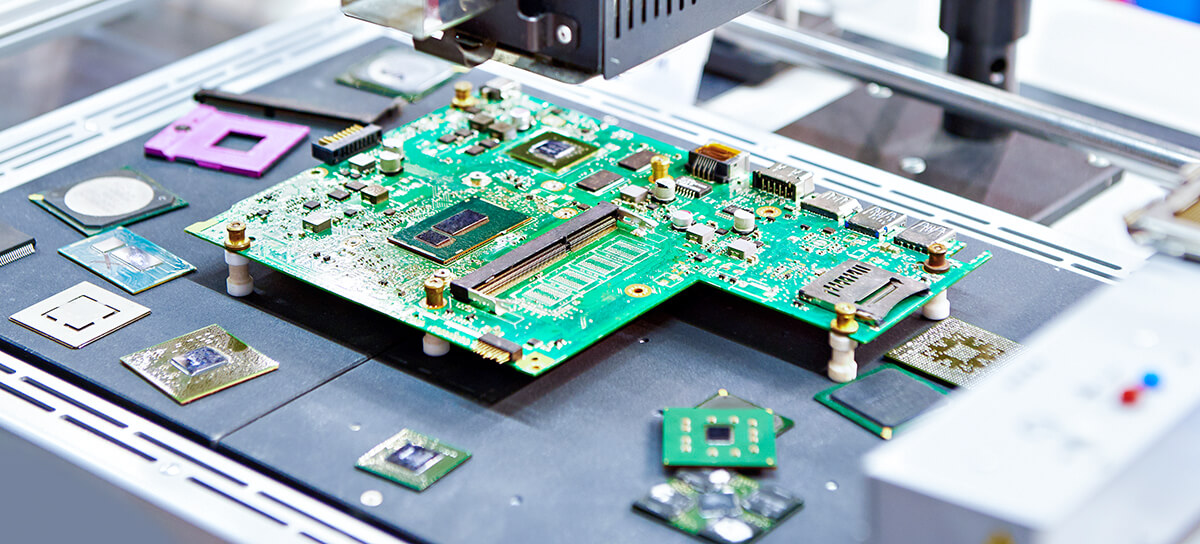
Best Countries for Contract Electronics Manufacturing, Part 1: China, Taiwan, the USA, and Mexico
We have compiled a list of the most popular countries for outsourcing electronics production to study their pros and cons....
LEARN MORE
LEARN MORE
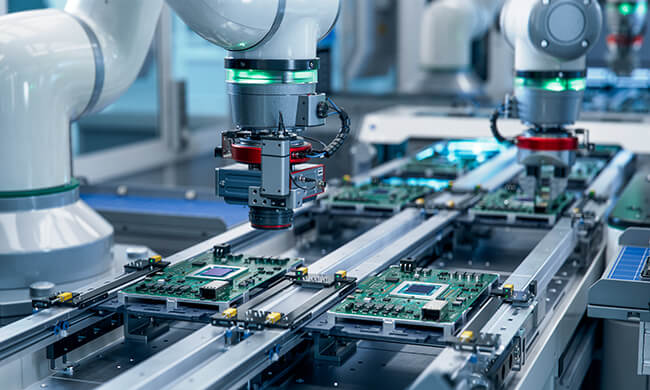
Manufacturing Electronics at Home vs Outsourcing It to Other Countries: All You Need to Know
What are the pros and cons of manufacturing electronics abroad? How to make sure your product is ready for mass...
LEARN MORE
LEARN MORE
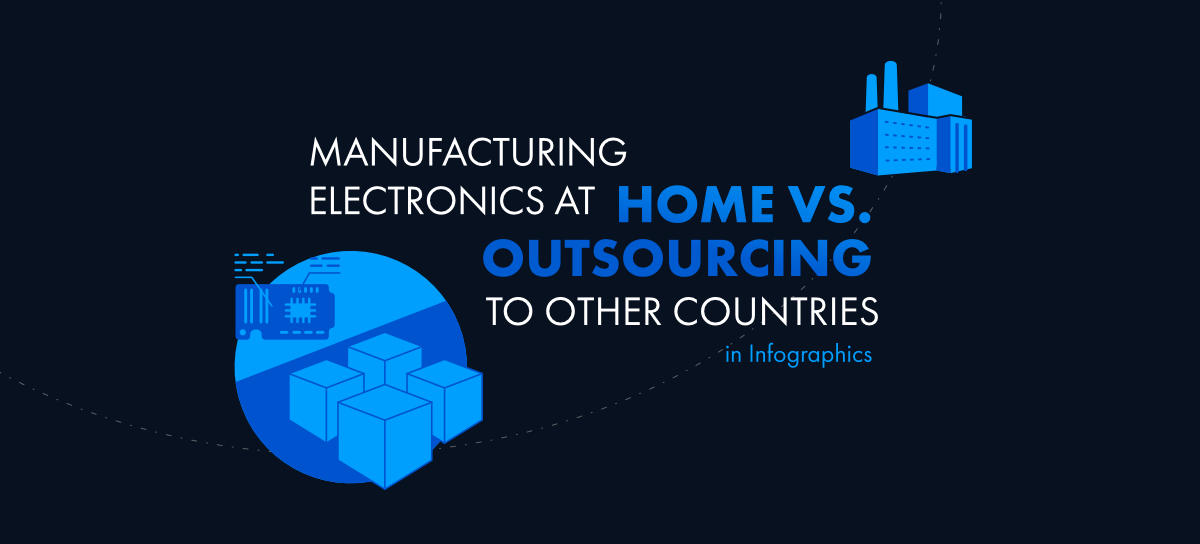
Manufacturing Electronics at Home vs. Outsourcing to Other Countries. Infographic
How can you prepare for mass production of your electronic device or system? What steps should you take? What are...
LEARN MORE
LEARN MORE


